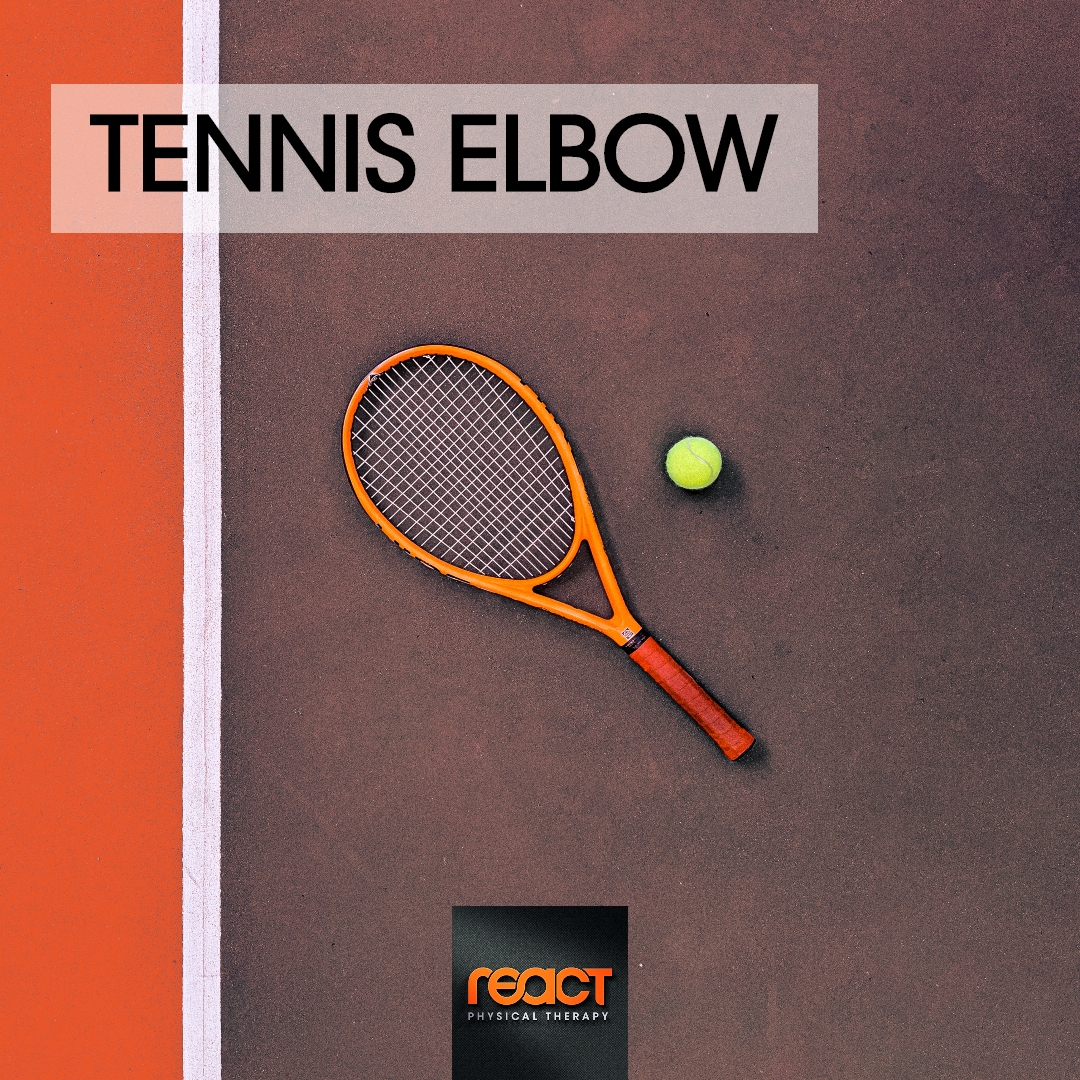Tennis Elbow

What is Tennis Elbow?
Tennis Elbow is a condition in which irritation to specific tendons of muscles in your forearm leads to pain at the outside of the elbow. The muscles involved are ones that extend your wrist or bring the back of your hand up. The most common way that these tendons become irritated is through repetitive activities that involve gripping. That may seem odd, but the extensor muscles are incredibly important to gripping because of how they stabilize your wrist.
Ironically, the vast majority of people who experience Tennis Elbow do not play tennis. Any type of repetitive gripping can lead to this condition. This includes a huge variety of tasks such as chopping vegetables, decorating baked goods, or working with any number of tools. If you work in a profession that requires such activities, we’d strongly recommend that you do some regular maintenance training to possibly avoid developing Tennis Elbow (see below!).
Why see a physical therapist?
Although Tennis Elbow is certainly the most common cause of having pain at the outside of your elbow, it is not the only cause. Pain in this area may be referred by the triceps tendon, the radial nerve, or even structures of your neck. Physical therapists are trained to narrow down the cause of your symptoms in addition to identifying areas of weakness that may be contributing to irritation of these structures.
For those that do experience Tennis Elbow, there are a number of manual techniques that have been demonstrated to be effective in the treatment of Tennis Elbow. These include mobilizations with movement, joint mobilizations, and deep friction massage. In addition to this, a surprising 70% of people who are diagnosed with Tennis Elbow also experience neck/upper back pain. When the neck/upper back are properly evaluated and treated by a physical therapist in this population, the patient’s symptoms at their elbow actually improved. Although this may be surprising to hear, it is something that we at React are well aware of and one of many reasons why we treat the whole body.
I work in a profession that involves gripping tools and repetitive tasks with my hands; what can I do to help prevent Tennis Elbow?
Great question! As we noted, there is a bigger picture of nearly every musculoskeletal problem we treat that benefits from treating the whole body. For Tennis Elbow, shoulder strength is often the missing link that will help the rest of your arm do these repetitive tasks properly. For that reason, we’d recommend these two shoulder exercises to help prevent Tennis Elbow:
- Rows: Have a band fixed at the center directly in front of you. Hold one side of the band in each hand. Pull your elbows back while you squeeze your shoulder blades together. Keep your elbows slightly away from your body.


- External Rotation: Hold a band in each hand with your elbows bent at 90 degrees. Start with mild tension in the band. While you keep your elbows at your sides, pull the band apart. Slightly squeeze your shoulder blades together while you do this movement. It is key to keep your shoulders down and back while you do this exercise.


Sources
- Abbott JH. Mobilization with movement applied to the elbow affects shoulder range of motion in subjects with lateral epicondylalgia. Man Ther. 2001;6(3):170-177.
- Bisset L, Beller E, Brooks P, Darnell R, Vicenzino B. Mobilisation with movement and exercise, corticosterioid injection, or wait and see for tennis elbow: randomised trial. BMJ. 2006;333(7575):939.
- Nagrale AV, Herd CR, Ganvir S, Ramteke G. Cyriax physical therapy versus phonophoresis with supervised exercise in subjects with lateral epicondylalgia: a randomized clinical trial. Man Ther. 2009;17(3):171‐178.
- Berglund KM, Persson BH, Denison E. Prevalence of pain and dysfunction in the cervical and thoracic spine in persons with and without lateral elbow pain. Man Ther. 2008;13(4):295-299.
- Cleland JA, Whitman JM, Fritz JM. Effectiveness of manual physical therapy to the cervical spine in the management of lateral epicondylalgia: a retrospective analysis. J Orthop Sports Phys Ther. 2004;34(11):713-722.